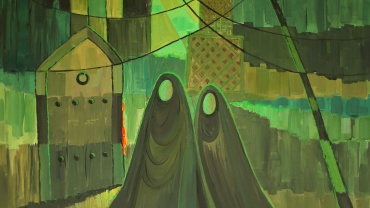
The title of this piece makes reference to the Arabic name for Mosul ‘The Mother of Two Springs’. Two faceless veiled women float across the lower half of the canvas, framed by a broken telegraph pole and crossing wires that seem to bear down upon…

Daesh forced Maslawi women to wear the Niqab (face-veil), denying them agency in their choice of personal expression. The crow perched on the woman’s shoulder is symbolic of the subjugation and control by Daesh of the Maslawi population. The multicoloured palette is joyful and defiant.…
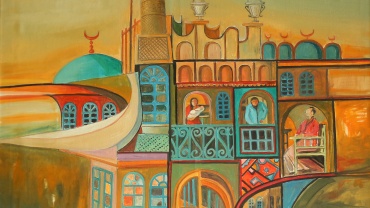
This painting represents the artist’s idealised version of Mosul following liberation, depicting is as the epicentre of cultural heritage and beauty it once was, and will be again.
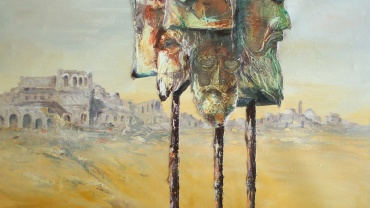
This painting stands as angry testament to the unfulfilled promises made to Maslawis about reconstruction projects. The great need caused by the destruction of the Old City in Mosul is evident in the background, yet the grotesque totems in the foreground advertise a series of…
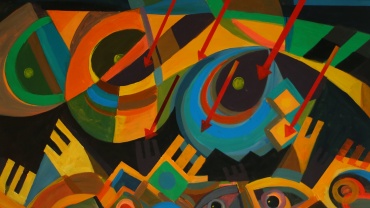
The artist uses heavily stylised visual devices, dividing the canvas into three – the open sky with barely any activity, the middle ground with Daesh weapons, international bombardment during liberation, and widescale destruction raining down upon the third section filled with the mask-like faces of…
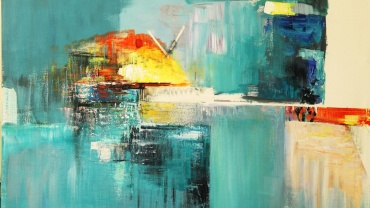
The artist uses multiple gradients of blue to represent the goodness (from ordinary local residents helping each other) that persisted throughout the occupation and liberation. The painting leaves a lot of reflective space within the canvas to show the voids left by destruction within the…
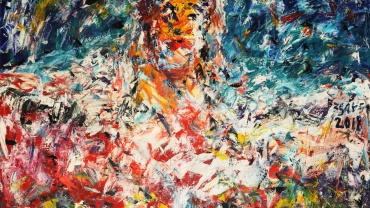
Employing impasto and heavily stylised brushwork, this picture is at the same time dreamlike and violent. The use of dramatic, disorientating passages of colour point to the mass destruction and devastation brought during the liberation of Mosul from ISIS control. The shadowy, heavily disguised figure…

This evocative painting depicts of a group of women fleeing Mosul during the occupation of the city under Daesh. The expressions on their faces show a mixture of grief, despair, anger, isolation and fear. The painting depicts women dressed in what appears to be rag-doll…
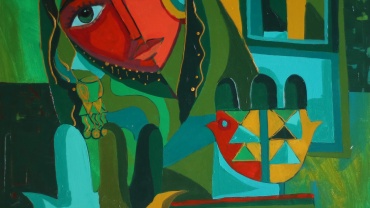
Maslawi women were the biggest victims under Daesh-occupied Mosul. This exquisite veiled woman evokes a sadness and wistfulness in the viewer. In the lower left and the centre of the painting sits the hamsa hand – a symbol shaped as a hand palm with five…
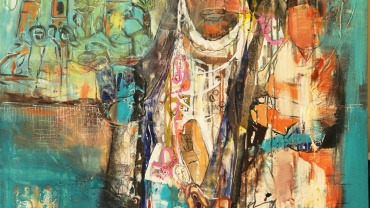
Maslawi women were the biggest victims under Daesh-occupied Mosul. This exquisite veiled woman evokes a sadness and wistfulness in the viewer. In the lower left and the centre of the painting sits the hamsa hand – a symbol shaped as a hand palm with five…
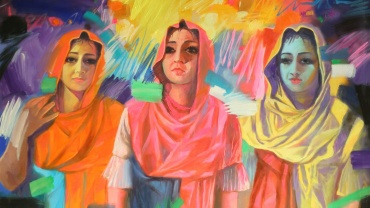
The painting represents the end of Women’s Rights under ISIS’s occupation of Mosul. The three women’s faces are mask-like and blank, signaling the dehumanisation of women under ISIS rule. The shocking, vibrant colours in the centre of the composition seem to drown out the black…
